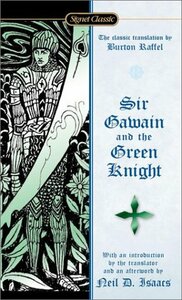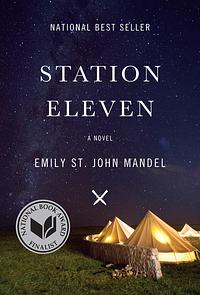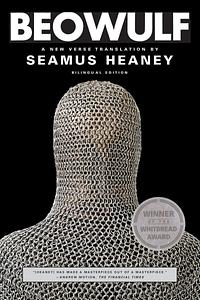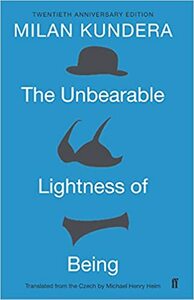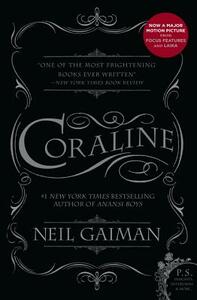Take a photo of a barcode or cover
theinquisitxor's Reviews (804)
This was definitely not the book that I was expecting to read based off of its description, however, I pushed through it and was overall disappointed. For some reason, it is supposed to be a big surprise that this book is about vampires. It is not mentioned in the description, and since I am not a big fan of vampire books, I questioned whether to even continue. But I did. It took about the first 200 pages for the main story to start, and I only skimmed about the last 150 pages. I think the story has potential, but everything just fell flat.
"Because I tell you, Hans, when I close the lid there's life in there. Almost a heart. And when everything goes quiet again, I hear the sounds of the barrel organ so clearly that for a moment I think I'm still playing."
Reading this book made me wonder how someone could ever write something so detailed, large and intricate. I have heard this book compared to Anna Karenina due to its length, level of detail and establishment of characters. The story begins with the main character and traveler, Hans arriving at an inn in the city of Wandernburg in Eastern Germany (or Prussia). Once one finds oneself in Wandernburg, they find it difficult to leave. The city cannot be pin-pointed on a map and almost everyone who enters never leaves. Hans meets an old organ-grinder in the street and beings a philosophical debate with him that lasts almost the entire book. Hans also meets Sophie, a high class young lady who is starved for literature and someone of equal mind to her. This begins their relationship.
This is a long, romance that spans the history of Europe and small town Germany. I loved to philosophical debates, the literature mentioned and the amount that you learn about the characters. So many characters are introduced and you become part of their lives in this novel. This novel is a little different in terms of style. There are no quotations marks for dialogue which makes reading slower and a more careful process, but I think it works well for this book and adds to the way the story is supposed to be perceived. Definitely not a book that anyone could read and enjoy, but one for some to savor.
"Hell is the absence of the people you long for."
This was utterly fantastic. A famous actor dies performance of King Lear, and shortly after that a Flu wipes out 99.6% of the population. There is so much to this book that it is hard to put it all into words. So many different characters and storylines that are all connected. We have glimpses of Arthur Leander's life as a famous actor before he dies. We also get to know his ex-wife, Miranda, who is the creator of the comic books titles Station Eleven. The paramedic who jumps on stage to preform CPR. There is Kristen, the Shakespearean actress who travels with the Traveling Symphony. There is Charlie, and all the others at the airport. And the prophet.
The concept of a Traveling Symphony- a group of musicians and Shakespearean actors who travel across the desolate, post- apocalyptic North America to bring music and theatre to all the survivors is a beautiful thing. If there is ever a apocalypse in my lifetime, I am definitely starting my own Traveling Symphony. The group arrives at a town that is under control of the Prophet. And they remain threatened by him throughout the book. Everything comes back to the life of Arthur Leander and the fateful night that he collapsed on-stage. Every time a connection was revealed in the book, I became more excited and anticipated the end even more.
As a person who loves music and Shakespearean theatre, this book was a treat.
This was utterly fantastic. A famous actor dies performance of King Lear, and shortly after that a Flu wipes out 99.6% of the population. There is so much to this book that it is hard to put it all into words. So many different characters and storylines that are all connected. We have glimpses of Arthur Leander's life as a famous actor before he dies. We also get to know his ex-wife, Miranda, who is the creator of the comic books titles Station Eleven. The paramedic who jumps on stage to preform CPR. There is Kristen, the Shakespearean actress who travels with the Traveling Symphony. There is Charlie, and all the others at the airport. And the prophet.
The concept of a Traveling Symphony- a group of musicians and Shakespearean actors who travel across the desolate, post- apocalyptic North America to bring music and theatre to all the survivors is a beautiful thing. If there is ever a apocalypse in my lifetime, I am definitely starting my own Traveling Symphony. The group arrives at a town that is under control of the Prophet. And they remain threatened by him throughout the book. Everything comes back to the life of Arthur Leander and the fateful night that he collapsed on-stage. Every time a connection was revealed in the book, I became more excited and anticipated the end even more.
As a person who loves music and Shakespearean theatre, this book was a treat.
This was the first piece that I read for my British Literature class. I have always enjoyed this poem, and I think it is so much more than a story about a dude who fights two monsters and a dragon. There is not much Anglo-Saxon literature that has survived, but luckily this did. I was first written around 700 AD and is a story that is not only about Beowulf, but also about Scandinavian history, human nature, outcasts and themes of Anglo-Saxon prose.
One thing that I love about Anglo-Saxon prose is the sense of The End of All Things. A lot of these works have this elegiac, melancholy theme and a persistent sense of death and the meaning of everything. There is a wonderful little Anglo-Saxon poem titled The Wanderer that has a some lines that go
"...the world's wealth shall all stand waste, just as in out own day all over middle-earth
walls are standing wind-swept and wasted, downed by frost, and dwellings covered in snow.
The mead-hall crumbles, its master lies dead..."
In which the same theme is present in the end of Beowulf,
"...A Geat woman too sang out in grief; with hair bound up, she unburdened herself of her
worst fears, a wild litany of nightmare and lament: her nation invaded, enemies on the
rampage, bodies in piles, slavery and abasement. Heaven swallowed smoke."
It might just be me, but I think there is something subtle and sublime that shows the beauty of Anglo-Saxon writing. Also, these Anglo- Saxon themes and elements are in Tolkien's work. In the Hobbit, there is obviously the dragon and treasure. But throughout the series, there is a reoccurring theme of ruins, looking back into past, the very real possibility of an End. Sometimes I think people are quick to dismiss this poem because they only see its surface, and fail to see all the rest.
One thing that I love about Anglo-Saxon prose is the sense of The End of All Things. A lot of these works have this elegiac, melancholy theme and a persistent sense of death and the meaning of everything. There is a wonderful little Anglo-Saxon poem titled The Wanderer that has a some lines that go
"...the world's wealth shall all stand waste, just as in out own day all over middle-earth
walls are standing wind-swept and wasted, downed by frost, and dwellings covered in snow.
The mead-hall crumbles, its master lies dead..."
In which the same theme is present in the end of Beowulf,
"...A Geat woman too sang out in grief; with hair bound up, she unburdened herself of her
worst fears, a wild litany of nightmare and lament: her nation invaded, enemies on the
rampage, bodies in piles, slavery and abasement. Heaven swallowed smoke."
It might just be me, but I think there is something subtle and sublime that shows the beauty of Anglo-Saxon writing. Also, these Anglo- Saxon themes and elements are in Tolkien's work. In the Hobbit, there is obviously the dragon and treasure. But throughout the series, there is a reoccurring theme of ruins, looking back into past, the very real possibility of an End. Sometimes I think people are quick to dismiss this poem because they only see its surface, and fail to see all the rest.
Wow, oh wow! This was even better than the first one! So many twists and turns, and everyone is plotting. Even the character's you don't think are plotting and scheming, they are. Throughout the entire book, you don't know who to believe, or who you can trust. This book didn't stop from the very first to the last page- and it made it a rather quick read because of it. It is full of action, plots, character growth, power struggles, but it never felt like it was overwhelming. Now that we have already been introduced to the world, Holly Black did such a good job of continuing to expand and go further into detail on everything.
This book was a wild ride, and Jude is totally one of my favorite characters ever. And Cardan grew on me a lot throughout the book. In the first book I tolerated the 'romance' but didn't really support it, but by the end of this one, I am a full out fan. And the ending! When I was about 10 pages from the end, I thought I had it totally figured out- nope! right up to the last few sentences there was even more twists and turns. I can't wait for The Half Drowned Queen, 2020 is way too far away.
This book was a wild ride, and Jude is totally one of my favorite characters ever. And Cardan grew on me a lot throughout the book. In the first book I tolerated the 'romance' but didn't really support it, but by the end of this one, I am a full out fan. And the ending! When I was about 10 pages from the end, I thought I had it totally figured out- nope! right up to the last few sentences there was even more twists and turns. I can't wait for The Half Drowned Queen, 2020 is way too far away.
I was not 100% sure what to expect from this book of Shakespeare retellings for children but I was pleasantly surprised. I did not read every single story, but rather focused on the ones that I know best, primary from studying several plays this past semester. Published in 1807, by Mary and Charles Lamb, this contains twenty prose retellings of the plays while still maintaining Shakespeare's elegant and poetic dialogue.
The edition of this book that I have is the Barns and Noble Fall River Press which is gorgeously illustrated. Most of the illustrations are done by Arthur Rackham, an illustrator from the early 20th century. I love early 20th century pen and ink drawings, and his work is totally worth looking up!
Mary Lamb wrote most of the stories ( all the the comedies and Romances) while Charles only wrote the six tragedies. Mary was not at first accredited with the book, and still today, most people only know of Charles Lamb. In the introduction, the book describes how Charles and Mary grew up near theater and probably saw many Shakespeare plays preformed. One thing I picked up on while reading was the sibling's interpretation of certain characters, probably due to how there were portrayed on stage during this time.
The most startling example was in The Tempest. Modern interpretation often makes this play a commentary on Colonialism- as per the dynamic between Prospero and Caliban. In many modern adaptations, Caliban is usually portrayed as having darker skin, and being very human (not typically in a 'savage' way). In Charles and Mary Lamb's version, Caliban is a grotesque, uncouth, ape-like creature. Which left me wondering if that was how stage productions were portraying Caliban during this time.
Shakespeare's plays are often confusing, filled with magic, twins, people pretending to be who they are not, and many sub-plots that children could get confused from. I think that C&M did a good job of telling the story in a way that keeps most of these elements, while still remaining a story. It is far from being a plot-summary. However, some characters were toned-down (I'm looking you, Prospero and Iago) and some sub-plots were not mentioned. But I understand that since this is written for children, not everything can be included- most on stage productions make many cuts to scenes and have their own interpretations. Which makes me very content with this book.
The edition of this book that I have is the Barns and Noble Fall River Press which is gorgeously illustrated. Most of the illustrations are done by Arthur Rackham, an illustrator from the early 20th century. I love early 20th century pen and ink drawings, and his work is totally worth looking up!
Mary Lamb wrote most of the stories ( all the the comedies and Romances) while Charles only wrote the six tragedies. Mary was not at first accredited with the book, and still today, most people only know of Charles Lamb. In the introduction, the book describes how Charles and Mary grew up near theater and probably saw many Shakespeare plays preformed. One thing I picked up on while reading was the sibling's interpretation of certain characters, probably due to how there were portrayed on stage during this time.
The most startling example was in The Tempest. Modern interpretation often makes this play a commentary on Colonialism- as per the dynamic between Prospero and Caliban. In many modern adaptations, Caliban is usually portrayed as having darker skin, and being very human (not typically in a 'savage' way). In Charles and Mary Lamb's version, Caliban is a grotesque, uncouth, ape-like creature. Which left me wondering if that was how stage productions were portraying Caliban during this time.
Shakespeare's plays are often confusing, filled with magic, twins, people pretending to be who they are not, and many sub-plots that children could get confused from. I think that C&M did a good job of telling the story in a way that keeps most of these elements, while still remaining a story. It is far from being a plot-summary. However, some characters were toned-down (I'm looking you, Prospero and Iago) and some sub-plots were not mentioned. But I understand that since this is written for children, not everything can be included- most on stage productions make many cuts to scenes and have their own interpretations. Which makes me very content with this book.

